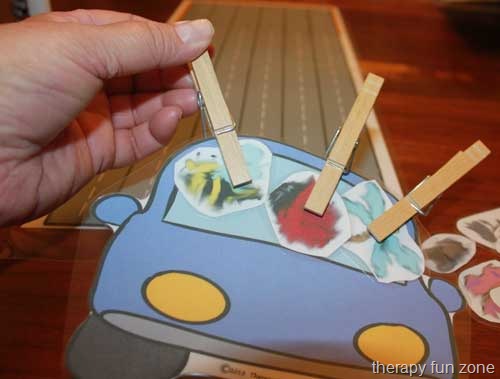Picky Eating and Transitioning to New Foods
This post may contain affiliate links.
In Occupational Therapy, we work with eating, and often work with kids that don’t like to eat food. Sometimes the problem is due to muscle difficulties, but every once in a while, I see a client who does not have the underlying muscle weakness, and they have the oral sensory defensiveness to tastes and textures of different foods. Most of the time, kids like this are on the Autism spectrum, but not necessarily. They could have general sensory processing problems and are therefore afraid to try new things.
You walk a fine line with these kids because you want to push them a bit to try new foods, but if you push too hard, they will stop trusting you, and could even stop eating the foods that they were eating.
You do not want meal times to be a battle ground because that will make the kids fight harder and there is a good chance that you will lose. Lower your expectations and you may find more success. Encourage spitting out food if they don’t like it since this may make trying something new more acceptable and less scary if they know it is not permanent (they don’t have to swallow it). Spitting into a cup is good for starters. Once they get past being afraid to try new tastes, then you can change the rules and no longer practice the spitting.
In order to change what is being eaten, you have to go very slowly and work to modify and add to what they currently like.
As an example, say someone has all of the motor ability to eat regular food, and will eat some regular food, but only eats fruit pureed. To modify this, I recommend you puree one fruit cup and take two fruit chunks from another fruit cup, mash them, and mix them into the puree. If this is tolerated, the next day, add three mashed chunks. Add the current number of mashed chunks until it is eaten easily, and then you can add another mashed chunk. Do this until they can tolerate the whole mashed fruit cup added. Then you can mash the first fruit cup instead of pureeing it, and add a cut up piece of fruit from a second fruit cup. Once tolerated, you can add more cut up pieces until they are eating a whole fruit cup cut up along with some mashed. Then you can go to just cutting up the fruit cup and adding some un-cut pieces. The idea is to take a flavor or food that a child likes and slowly change it over time so that it is in a different form, but at a slow rate so that it is not very noticeable.
Once you have achieved success on an easy food, you can move on to other foods. Pasta is often a good food to use if kids like the sauce. Some kids prefer a cream sauce while others prefer a tomato sauce. The plus about pasta is that if you cook it longer, it gets softer and therefore it can be pureed, mashed, and cut up to change its consistency without changing its flavor. You could go through similar stages with the pasta as you did with the fruit.
You don’t necessarily want to use this technique on a very favorite food because you don’t want to completely change that one favorite food. Keep the favorite food a safe food that you don’t mess with.
Vegetables are harder to do this technique with because many kids won’t touch them to start with, so we don’t have a solid starting point. Often times, kids are more willing to try something if it has a sauce on it, such as a cheese sauce, ranch dip, ketchup, or sour cream. You can try cooking vegetables extra soft and put the child’s favorite condiment/sauce on it.
The vegetables that work best and are easy to mash when they are cooked soft are potato, carrot, broccoli, cauliflower, and sweet potato. Do not try it with peas and corn because they have an outer shell that does not soften or mash.
Meat is hard to adapt to because it requires more chewing. Lunch meat is softer and more easily chewed. Scrambled eggs are usually easy to eat, but may require some sauce or other treatment like cheese and sour cream to get the child to try it. Don’t be afraid to add extra sauce and condiments if a child likes them. If it gets them to try a new food, great. You can wean them off of the extra condiment later once the child is eating more variety.
This is just one technique used when modifying foods that kids eat, and when it is used, it is dependent on what the child’s needs are.
This should not be considered medical advice, and if you feel that your child has a significant eating problem, you should consult with an Occupational Therapist.








